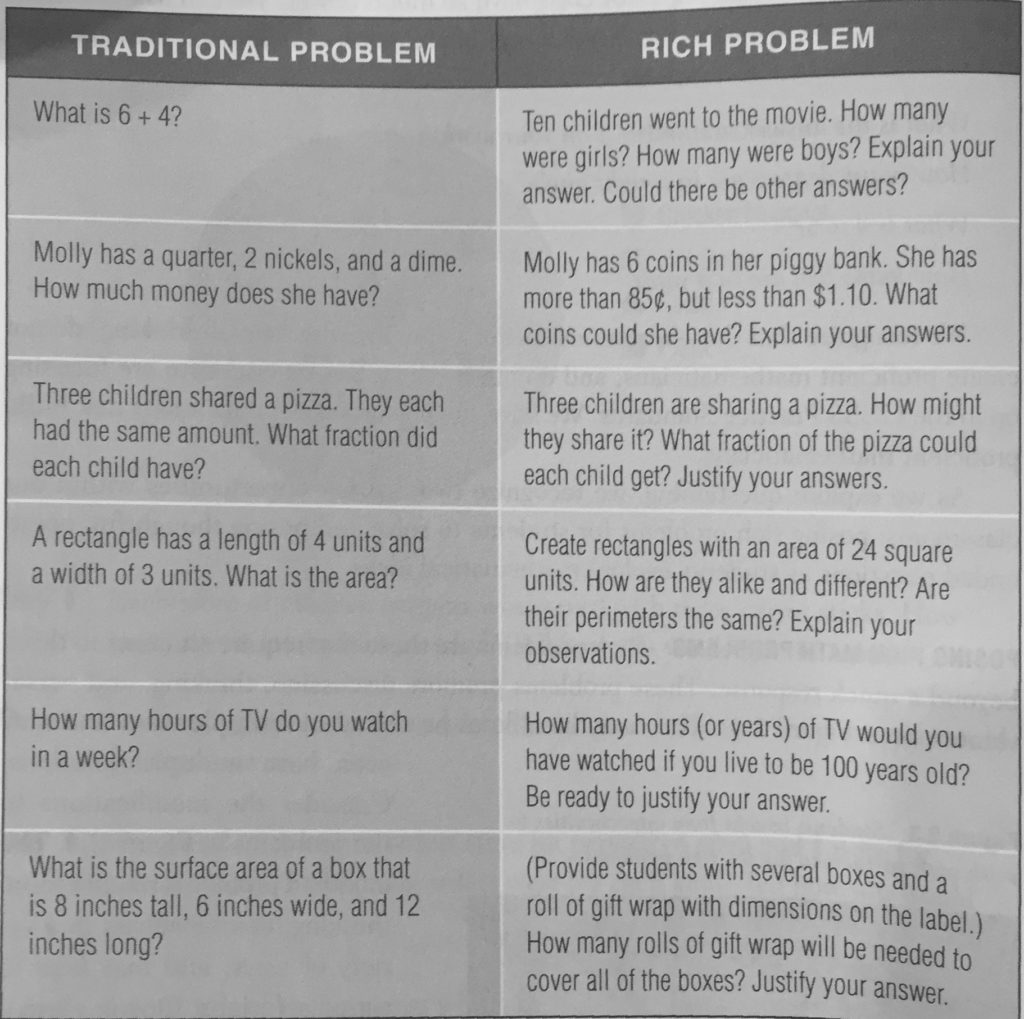We are hip-deep in linear relationships (and a few things that aren’t).
Gallery Walk
We started the morning with posting some of the extension problems that participants wrote last night and then did a gallery walk. Andrew highlighted two strategies for getting students to move to systematic or efficient strategies: using uglier numbers that are less prone to “I just knew it,” and multi-step problems where the task requiring the strategy is repeated multiple times and is part of a larger whole.
The Milk Problem
Then Andrea, Matt, and Andrew led a discussion of the milk problem, trying to make 2% milk from 1% milk and 4% milk. A mathematical take-away lesson is “proportions don’t add, but amounts do.” A meta-cognition lesson is “sometimes you just need to try something to see why it doesn’t work.”
Currency Conversion
Then Andrew continued the Currency Conversion problem, where now there is a fee involved. We drew a lot of nice lessons out of it already: parallel lines correspond to lines with the same slope, the conversion rate corresponds to the slope of the line, the benefits of writing both fee-schemes as “convert to euros then subtract fee.”
Upside down teaching, real-world problems
We then moved into a pedagogy session, where we began with a discussion of the rich problems teachers developed during HW. Then each table generated a list for tomorrow’s iceberg activity (also from HW prompt). We also had a discussion of upside down teaching (from last night’s reading). Finally, we watched Dan Meyer’s TED talk.
Andrew shared the site mathpickle.com which has mathematically rich games and puzzles that students will happily engage in.
Terminology for Linear Relationships
Matt led a discussion putting names (slope, y-intercept, x-intercept) to concepts identified in the Currency Exchange with Fee problem.
The Tortoise and the Hare
We looked at the Tortoise and the Hare problem, wherein a scenario is presented and participants had to ask for certain information (e.g., the speeds) and not just handed it from the start. Table-groups were then given different follow-up questions and asked to present their answers to the rest of the group. Along the way we saw how many natural questions can be answered via a graph.
We finished the day be repeating the teaching episodes from Monday, but now practicing purposeful questioning and eliciting student thinking.
Homework for tonight:
Math
Write formulas for the Tortoise and the Hare problem that can answer this question: After x minutes, how many feet has the tortoise/hare/chipmunk run? The following information was provided during class:
- In the first minute the tortoise ran 1200 feet
- In the first minute of running the hare ran 3000 feet.
- The tortoise and hare maintain a constant speed.
- The hare starts with a 10 minute nap, then runs. The tortoise starts right away.
- (Follow-up #7): A chipmunk starts from 12,000 feet behind the tortoise and runs at 2000 feet/minute.
Pedagogy
- Listen to the audio-recording of your “revised” teaching episode.
- In your notebook, write down the questions that you asked.
- Examine the questions you used while playing the role of teacher and write about what you learned about trying to use purposeful questions and eliciting student thinking.
- Read one of the messages from Smarter Than We Think. If your last name begins with A-M, read Message #14. If your last name begins with N-Z, read Message #16.
- Reflect back over all of the pedagogy discussions we have had in PMI and start a list in your notebook titled “Things I can do to help my students persevere when solving rich math problems.” Add at least three things to your list.
BTW: The “Messages” we’ve been reading come from the excellent book pictured below.





